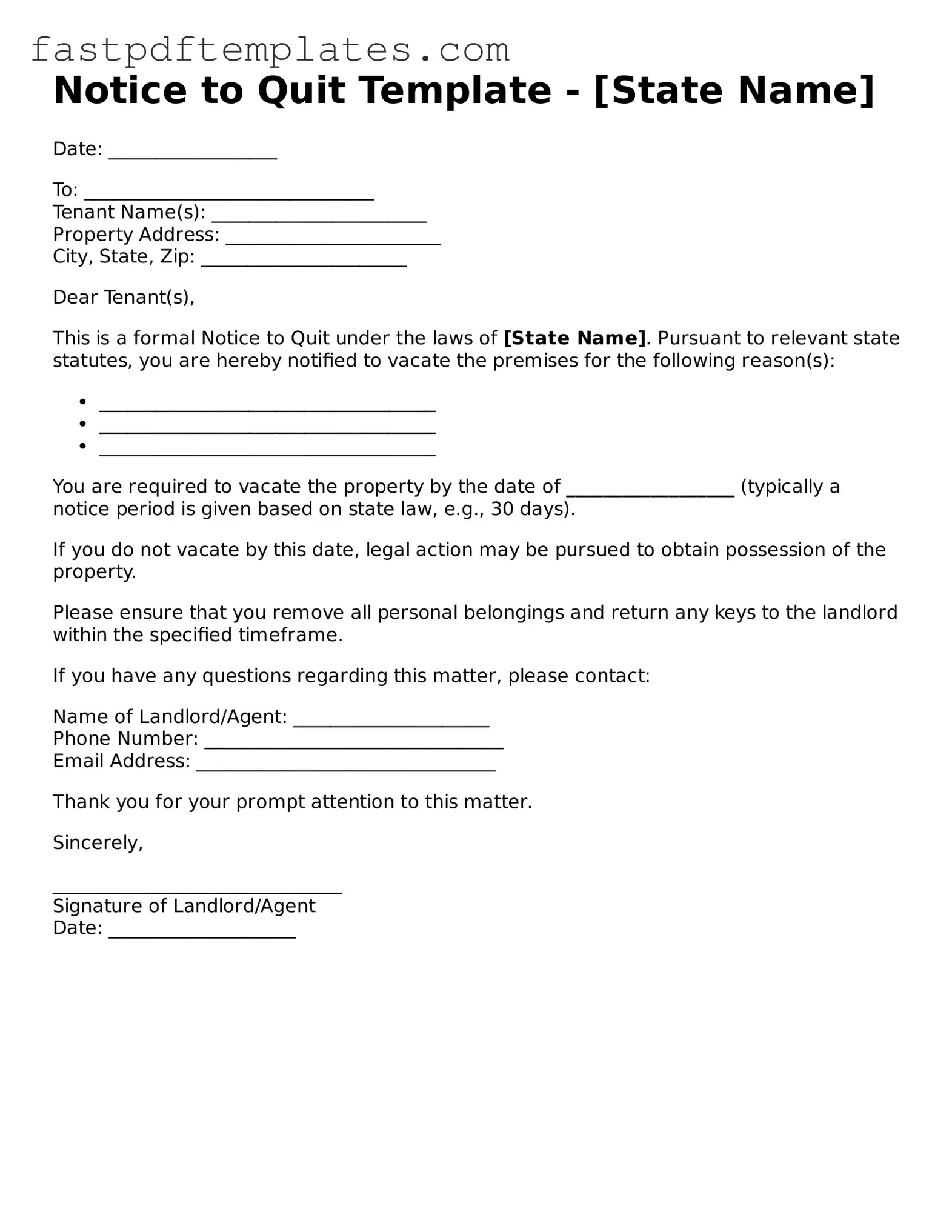Notice to Quit Template - [State Name]
Date: __________________
To: _______________________________
Tenant Name(s): _______________________
Property Address: _______________________
City, State, Zip: ______________________
Dear Tenant(s),
This is a formal Notice to Quit under the laws of [State Name]. Pursuant to relevant state statutes, you are hereby notified to vacate the premises for the following reason(s):
- ____________________________________
- ____________________________________
- ____________________________________
You are required to vacate the property by the date of __________________ (typically a notice period is given based on state law, e.g., 30 days).
If you do not vacate by this date, legal action may be pursued to obtain possession of the property.
Please ensure that you remove all personal belongings and return any keys to the landlord within the specified timeframe.
If you have any questions regarding this matter, please contact:
Name of Landlord/Agent: _____________________
Phone Number: ________________________________
Email Address: ________________________________
Thank you for your prompt attention to this matter.
Sincerely,
_______________________________
Signature of Landlord/Agent
Date: ____________________
